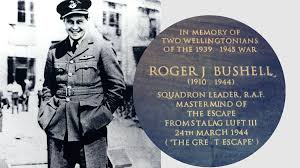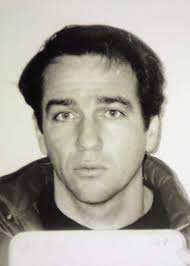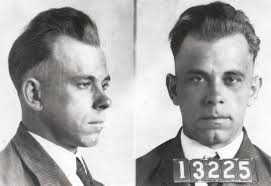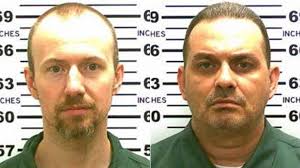Today we are exploring daring heists, ingenious plans, and the relentless pursuit of famous prisoners escapes for freedom that have captivated the world.
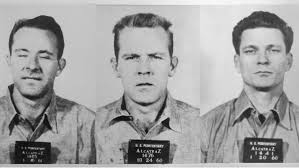 The Alcratraz
The Alcratraz
The Alcratraz escape refers to the famous attempts by tree inmates to escape from Alcatraz Federal Penitenitiary, a maximum-security prison located on an island in San Francisco Bay, California.
On June 11, 1962, Frank Morris and brothers John and Clarence Anglin successfully escaped from their cells through holes they had drilled in the walls. They used homemade tools and dummy heads to deceive guards during nightly checks. They climbed through utility corridors to reach the roof, descended a ventilation shaft, and made their way to the shoreline using an inflatable raft made from raincoats.
Despite an extensive search by law enforcement, the three men were never conclusively found. The escape has captured public imagination and inspired numerous theories and investigations into their fate.
The Great Escape
The Great Escape typically refers to a daring and large-scale escape attempt by Allied prisoners of war from Stalag LuftIII, a German prison camp during World War II. This event occurred in March 1944 and involved around 200 Allied officers, mainly from Britain, Canada, Australia, and other Allied nations.
The escape was meticulously planned over several months by RAF Squadron Leader Roger Bushell and other prisoners. They dug three tunnels codenamed “Tom,” “Dick” and “Harry” using improvised tools and materials “Harry was the tunnel chosen for the escape. On the night of March 24-25, 1944, 76 prisoners crawled through the 336 -fooot-long tunnel “Harry” to freedom. The tunnel exited beyond the perimeter fence of the camp. Of the 76 escapees, only three managed to reach freedom. 73 were recaptured, and 50 of them were executed by the Gestapo on the orders of Adolf Hitler as a deterrent to future escape attempts.
The Great Escape became widely known through books and films, notably the 1963 film “The Great Escape,” starring Steve McQueen and James Garner. It remains a symbol of Allied persistence, courage, and the determination of POWs to resist captivity.
Pascal Payet
Pascal Payet is a French criminal who gained notoriety for his multiple escapes from prison, particularly using helicopters . His escapes have have earned him a nickname in the media as “Helicopter Bandit”
First Escape (2001): Payet first gained attention in 2001 when he escaped from the Luynes prison in france by helicopter. The helicopter was hijacked and forced the pilot to land in the prison yard where Payet was awaiting trial.
Second Escape(2003): After being recaptured and sentenced to 30 years in prison for murder, Payet escaped again in 2003 from the Gresse prison using a helicopter. This time, the helicopter was hijacked during its flight, and Payet escaped along with three other inmates.
Payet was recaptured in 2007 in Spain and extradited back to France to serve his sentence. His daring escapes highlighted significant security flaws in French prisons and led to increased scrutiny and reforms in prison security measures, particularly regarding helicopter access to prisons.
John Dillinger
John Dillinger was an infamous American bank robber during the Great Depression Era.
Dillinger became notorious for his bank heists and escapes from law enforcement. He and his gang were responsible for a string of robberies across the Midwest in the early 1930s. Dillinger was labeled as “Public Enemy No. 1” by the FBI, a designation given to criminals considered the most dangerous and hig-profile during that time. He managed to escape from jail twice. His first escape was from the Crwon Point, Indiana, jail in March 1934 using a wooden gun. His second scape was from the Lake County Jail in Crown Point, Indiana, in October 1933.
Frank Abagnale
Frank Abagnale si a former con artist and impostor who gained notoriety for his criminal activities in the 1960s.
Abagale started his criminal career as a teenager, forging checks and assuming various identities to avoid capture. He posed as and airline pilot, a doctor, and a lawyer, among other professions. He was arrested in 1969 in France at the age of 21. He had been on the run from law enforcement agencies around the world for several years. He served time in French, Swedish, and U.S. prisons. After his release, he cooperated with the FBI as a consultant on fraud prevention and security.
Abagnale has since become a renowned security consultant, advising companies and governments on fraud prevention and security measures. His story was popularized by the 2002 film “Catch Me If You Can,” directed by Steven Spielberg and starring Leonardo DiCaprio as Abagnale.
Joaquín Guzmán
Joaquín Guzmán, commonly known as “EL Chapo,” is a notorious Mexican drug lord and former leader of the Sinaloa Cartel, one of the most powerful drug trafficking organization in the world.
Guzmán rose to prominence in the 1980s and 1990s as he expanded the Sinaloa Cartel’s operations, smuggling massive quantities of cocaine, methamphetamine, and other drugs into the United States and other countries. He was arrested in Mexico in 1993 but escaped from prison in 2001, reportedly in a laundry cart. He remained at large for over a decade until he was recaptured in 2014. He escaped from prison again in 2015 through a tunnel dug under his cell, but was recaptured in 2016. In 2017, Guzmán cartel has been responsible for untold violence and corruption in Mexico and other countries. His capture and prosecution have been hailed as significant victories in the international fight against drug trafficking.
David Sweat and Richard Matt
David Sweat and Richard Matt were both serving lengthy sentences for serious crimes. Swerat was convicted of murdering a sheriff’s deputy in 2002, while Matt was serving time for kidnapping, dismembering, and killing his former boss in 1997 .
On June 6, 2015, Sweat and Matt escaped from Clinton Correctional Facility, a maximum-security prison. They used tools smuggled to them by Joyce Mitschell, a civilian employee at the prison. The escape involved cutting through steel walls and pipes, navigating a series of tunnels and catwalks, and emergingfrom a manhole outside the prison walls.


